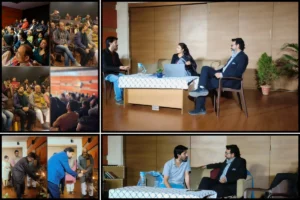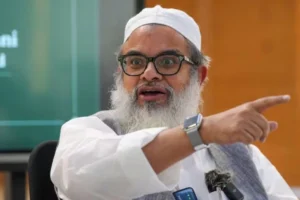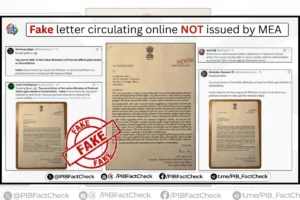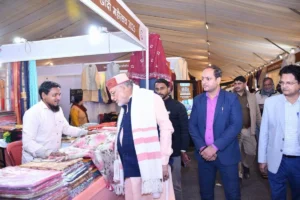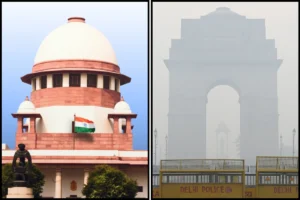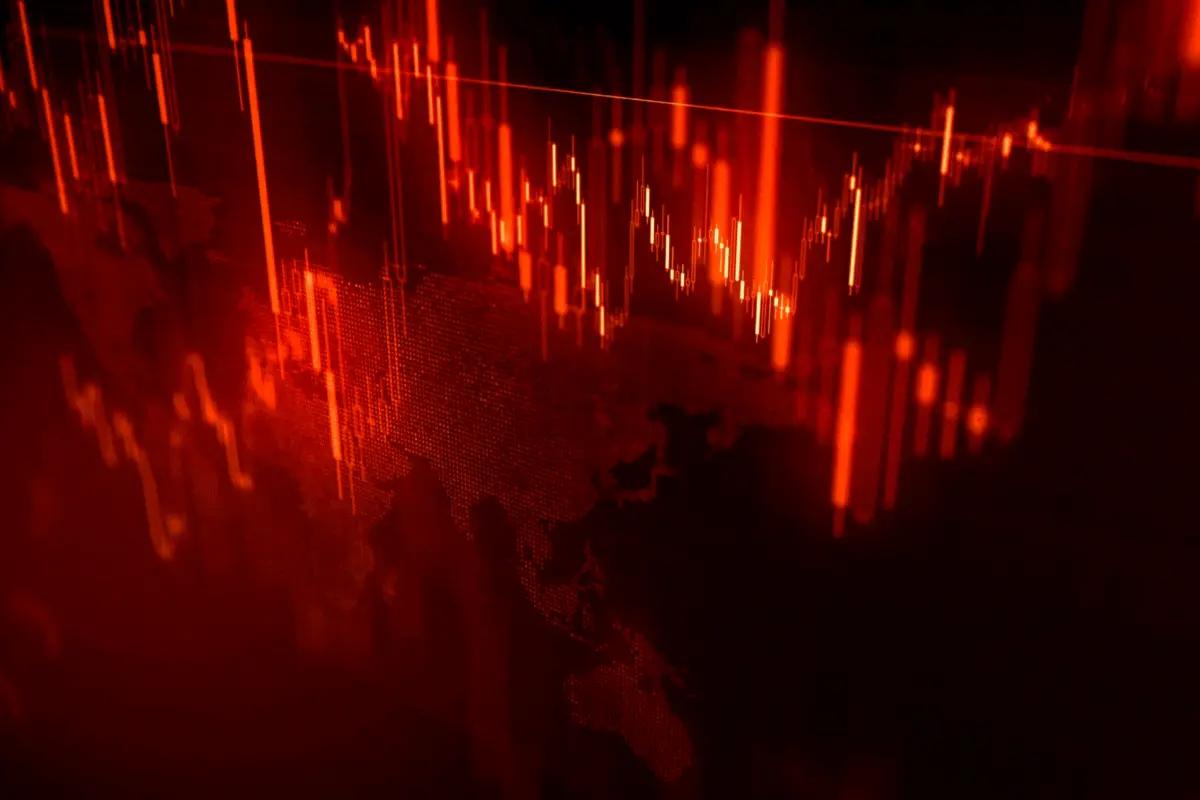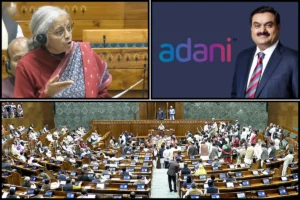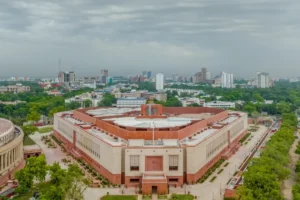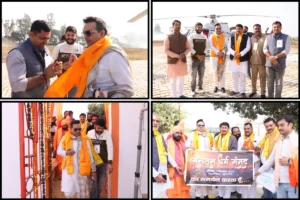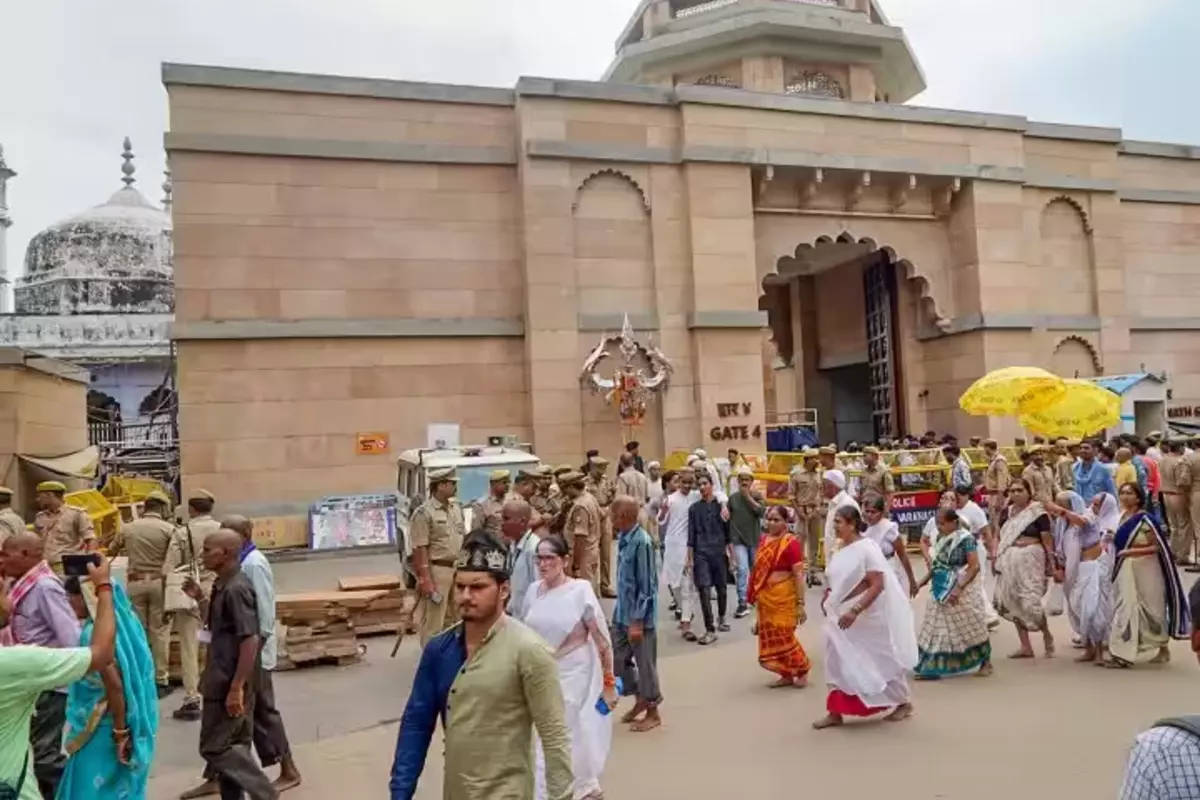
The Archaeological Survey of India (ASI) has started the process of the survey from early morning on Friday, August 4, after the Allahabad high court on Thursday, August 3, cleared the way for it. The survey’s goal is to determine whether the Gyanvapi Masjid in Varanasi was built over an earlier structure of a temple.
The group in charge of maintaining the mosque has since appealed the high court’s decision to the Supreme Court. Before the ASI began survey on the site, the Muslim side requested the Supreme Court to rule on their appeal.
Alok Tripathi, an additional director general at ASI, stated that the government organization would resume archaeological survey and scientific investigation on August 4 in accordance with the high court’s orders in a letter to the District Magistrate of Varanasi and the Varanasi Police Commissioner.
The Varanasi government was asked by the ASI official to grant the survey team access to the site and sufficient protection for their work and stay.
The parties engaged in the matter have received a copy of the ASI letter from the district administration.
‘No regard for the Places of Worship Act’
On August 3, the Allahabad High Court Chief Justice (CJ), Pritinker Diwaker, dismissed the plea filed by the Gyanvapi mosque committee in opposition to the Varanasi District Judge’s July 21 order directing the ASI to assess the property.
CJ Diwaker noted that while restoring the district judge Varanasi’s order, “the scientific survey/investigation proposed to be carried out” was “necessary in the interest of justice and shall benefit the plaintiffs and defendants alike and come in aid of the trial court to arrive at a just determination.”
Yasin was shocked by the decision. “I regret that we lost one Babri Masjid in the mistaken belief that it would safeguard the others. But the potential losses to others seem to be endless. What’s worse, is that the Places of Worship Act of 1991 is completely disregarded.
The high court upheld the district judge’s order to have the ASI director conduct scientific research, surveys, or excavations at the location, which is settlement plot no. 9130, with the exception of the area (the ablution tank) that was sealed by the Supreme Court last year.
The district court had also instructed the ASI to carry out a thorough scientific assessment of the current construction using GPR Survey, excavation, dating method, and other cutting-edge techniques to determine whether it had been built over an earlier structure of the Hindu temple.
The four Hindu ladies had requested year-round access for worship in the Gyanvapi property in a lawsuit they had filed last year, and the court had granted their request.
According to the high court, there is “no reason to doubt” the ASI’s claims that “no damage is going to be caused to the property in question” during the archaeological survey.
The high court had requested assistance from the ASI on the topic during the sessions.
The ASI would undertake a survey, documentation, photography, detailed description, GPR survey, and full studies “without harming the existing structures,” according to an affidavit Tripathi later filed in court.
The ASI would carry out a thorough investigation in line with the law, compile a list of the antiquities discovered inside the building, conduct a thorough investigation, and carry out the exercise to determine the age and type of the construction.
Also read: “Work Above Caste-Based Politics”: Says PM Modi To NDA MPs
Tripathi informed the court that there will be no structural damage caused during the survey work.
No drilling, no cutting, and no removal of brick or stones from the existing structure will be done during the survey and study; the scientific examination will only be conducted outside of the structure and in open spaces.
The full survey will be carried out without causing any damage by employing procedures like GPR survey, GPS survey, other scientific methods, and other contemporary techniques. The ASI will ask the high court for authorization if any additional research or excavation is necessary.
Fears that the structure might be harmed
When speaking to reporters in Prayagraj, one of the attorneys for the Hindu petitioners, Vishnu Shankar Jain, exclaimed with joy that the survey should begin shortly. “Whatever there is, whether it’s truth or lies, should come out before the court,” he stated.
However, Farman S. Naqvi, a prominent attorney representing the Gyanvapi Masjid group, told The Wire that he was not persuaded by the ASI’s guarantee that the building would not be harmed.
Also read: Mob Clashes With Security Forces In Manipur, Killing a Cop And Seizing Weapons
“Since the outset, we have been concerned that the building would sustain harm due to its age. We put its age at 600 years. The opposing side asserts that it is 1,000 years older. The building was not constructed using current materials or technology. Who will be liable if a stray brick falls from somewhere? said he.
Furthermore, according to Naqvi, there is no comparable example of a survey on a historic structure to draw upon, and there is no independent scientific guidance as to what techniques would be or have been employed in circumstances like this. What assurance is there that it won’t be harmed? Naqvi questioned.
The Masjid committee claimed that if any excavation was done during the scientific inquiry, it would harm the structure, but Justice Diwaker found no merit in their claim. The ASI affidavit stated that they will not do any excavation, according to the court.
To read more such news, download Bharat Express news apps








